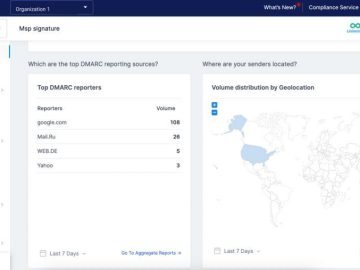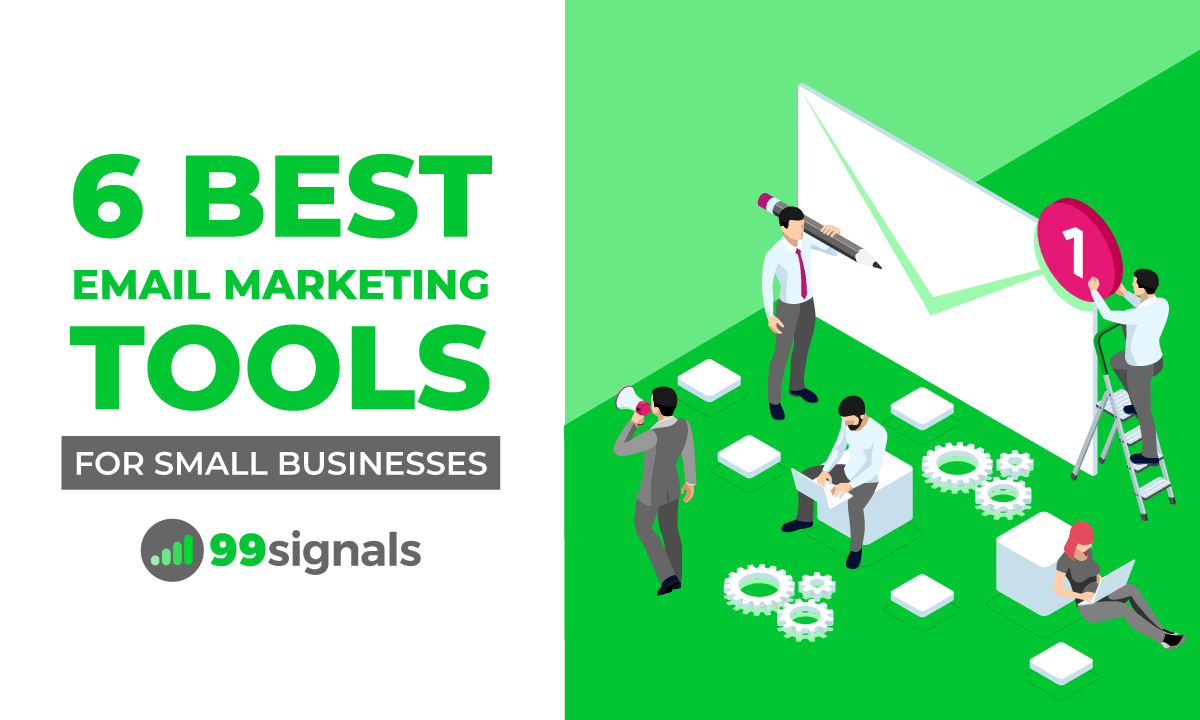Ready to start a successful email campaign? Use the following tips to take your e-commerce email marketing to the next level.
1. Use Email Marketing Software
Before you get started, we recommend investing in email marketing software that can help you manage all of your campaigns, audiences and click-through rates (CTRs). They make it far easier to create and send emails to specific customers as well as see which emails are the most effective. Mailchimp is a top choice for all-in-one marketing. Another option is Constant Contact, which offers differently priced plans depending on your company’s needs. But there are plenty of alternatives to consider as well.
2. Utilize Abandoned Cart Emails
When someone makes it nearly through checkout but then doesn’t finish the purchase, it’s like having a fish on your marketing line. You know exactly what they want to buy, so use that to reel them in. Send out cart abandonment emails to remind customers of what they’re missing out on. They’re effective at closing the deal, as 50% of users who click into a cart abandonment email end up completing their purchase.
However, you don’t want to overwhelm your audience. Limit your efforts to three total cart abandonment emails: one within a couple of hours of abandonment, one the next day and one the day after that.
3. Send Out Discounts and Promos
Give customers a reason to stay subscribed to your email list by, for example, offering them a chance to receive savings and discounts.
Offer frequent promos and discounts only available through email. For example, it might be something as simple as a 10% off code for subscribing to your newsletter. It could also be something even more exclusive, such as access to a special edition product or experience.
4. Always Include a Call to Action (CTA)
Your emails should always have a point, whether that’s encouraging customers to buy a certain product or check out your new blog post. Make this CTA clear and easy to follow.
For example, if you want customers to see your new product line, include a clear link to it as well as enticing copy encouraging readers to learn more. On average, email CTAs have a CTR of 3% to 5%, which is a far higher rate than Facebook ads (1.1% – 1.3%) or Google Ads (0.05%).
5. Segment Your Audiences
One of the most crucial things to do before you send out emails is segment your audience. About 78% of marketers rate it as the most effective strategy for email marketing campaigns.
Segmenting your audience means organizing it by type of customer. For example, you might create separate email campaigns based on customer demographics, previous purchase history, product interests or even responsiveness to previous email campaigns.
When you establish these different audiences, you can then create custom content tailored to their needs. You might send your VIP customers additional bonuses or rewards or you might market more expensive products to customers with a higher-value purchase history. The possibilities are endless.
6. Personalize Your Emails
Along the same lines, you’ll want to make sure you’re personalizing your emails—72% of marketers rated it as the most effective strategy for email marketing. Naturally, this means addressing the customer by name, but it can also go further than that. You might reference products they previously bought or were interested in through dynamic content.
Approximately 64% of emails leverage dynamic customization. Personalizing content can make your emails feel more human and less generic, helping customers build brand trust and loyalty.
7. Create a Winning Subject Line and Email Preview
The subject line might be your only chance for a shot on goal. You could have the best-crafted email message in the world, but if the subject is boring, spammy or irrelevant, customers won’t even open it to find out.
Two of the top strategies you might want to consider are personalization and emojis. Currently, 60% of email marketing teams use personalization in the subject line to grab a consumer’s interest, while 58% use emojis to add some fun to the inbox.
Don’t forget about the first few lines of your email, too. This often shows up in email previews in modern mailboxes. Make sure these are compelling and intriguing—perhaps with a bit of a cliffhanger so the reader has to click into the message to find the answer to their question.
8. Design Emails for Both Mobile and Desktop Users
Mobile users are more prevalent than ever before, but that doesn’t mean everyone has abandoned desktop computers. The solution? Create emails with a responsive design that works perfectly in both formats. This is the strategy 63% of email marketers take. By making sure everyone can enjoy your emails no matter where they’re reading them, you’ll maximize your chance of success.
9. Try Out A/B Testing
A/B testing is a way to see which version of an email performs better. You’ll send out two versions of an email—a control one that uses your typical strategy and an experimental one that changes just one element. Then, you’ll track the results from each email to see which one generated more interest.
The elements that email marketing teams A/B test most often include personalization in the subject line, emojis in the subject line and animated GIFs or PNGs. However, you could also use it to test different CTAs, font sizes, color schemes and much more.
10. Preview Your Email Before Sending
This tip should be a no-brainer, but we know how frantic things can get when you’re on a deadline. Always preview your email before sending it out to make sure everything is spelled right, customization is working properly and all images load correctly.
Customers will take you less seriously if your email has a lot of typos or broken links. There’s research to back this up: companies that regularly tested every email before sending increased saw a 6% average improvement in ROI compared to companies that didn’t.
11. Invest in Automation
Email automation campaigns are ranked as the most important strategy for email marketing campaigns by 71% of marketers. This is for good reason as they’ll make your life a lot easier. Rather than hand-crafting every message and sending it out, email automation services can curate cart abandonment emails, product reminder emails and even out-of-stock notification emails on your behalf. You can even set up a welcome drip campaign to send out automatically to every new member of your email list.
12. Refrain From Spamming Your Email Lists
No one likes getting 12 messages a day from the same company. You’ll want to limit the number of emails you send to a reasonable amount. Research suggests that the sweet spot is nine to 16 emails a month—or about two to four a week.
But don’t make the mistake of not sending enough emails as well. Only sending one email a month has a lower ROI than sending over 33 emails a month. Being consistent without being overwhelming is key to staying at the top of a customer’s mind.
13. Consider Design Elements Carefully
Email is about more than just a relevant message. It’s also about the visual experience. You want your emails to look nice to reflect well on your brand. One area that many companies aren’t optimizing is creating emails specifically for Dark Mode. As many as 40% of people use this mode when viewing email, so if your message is in all-black text, it might not even be readable.
You might also consider integrating multimedia into your email. Nearly 50% of marketers said adding a video to an email somewhat improved that email’s performance.
14. Test Out Artificial Intelligence (AI)
AI is a hot-button issue in the marketing world, so it’s no surprise that many email marketers have started using it to craft subject lines, copy and even CTAs. It looks like AI might be helping as 56% of marketers said that content created by AI performs better for them than content created without it.
Still, this doesn’t mean you should dive in head-first on the robot train. Our survey on AI found that 64% of consumers were concerned with AI being used in personalized advertising, meaning you might lose trust if you over-rely on this tool.
Bottom Line
E-commerce email marketing is an excellent strategy for converting consumers into customers. It’s also a great way to nurture brand awareness and trust with former customers. However, it’s not always an easy process to get started with. It can be daunting creating your first email and sending it to your subscribers. But when you use the e-commerce email marketing tips we’ve outlined here, you’ll be well on your way to curating an email experience your followers will love.
Featured Partners
Starting Price
$17 per month
E-commerce (low-priced plan)
Yes

Starting Price
$1.95 per month
Standout Features
Customizable templates, easy grag-and-drop technology, SSL certificate


Starting Price
$23 per month
E-commerce (low-priced plan)
Yes






